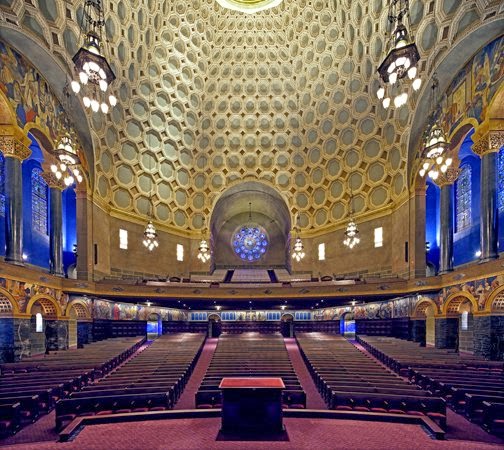This is the week before my own birthday, so maybe that's why I am so struck by the number of historic anniversaries that occur this week and into mid May. These are events of national import, not just for Angelenos. Consider:
130 Years Ago:
May 1, 1884: Moses Fleetwood Walker plays baseball, becoming the first African American to enter the game professionally five years before the National and American Leagues began banning players of color. He was catcher for the Toledo Blue Stockings. His brother played professionally too.
Pro sports, race, and athletes must be on my mind; can't imagine why.
60 Years Ago:
Brown v. Topeka Board of Education
This was actually one of five cases brought to the U.S. Supreme Court over legal segregation in education. For decades, the doctrine of "separate but equal" schools for different racial groups had been the accepted, legal norm.
After new Chief Justice Earl Warren read the unanimous decision on May 17, 1954 (and Warren worked hard to make it unanimous), everything changed. Even in California, which strictly speaking was not a segregated state, the decision turned school districts upside down.
The picture at right, from the LA Library's collection, was taken at a protest in 1963. Yup, here in Los Angeles, we did not jump up and de-segregate with all due dispatch. Surprise!
Like most places, separation of the races was entrenched. The city decided that our schools were integrated enough that busing students to different schools was not needed; many folks disagreed. According to this timeline from UC San Diego, another lawsuit filed in 1963, Crawford v. Los Angeles, pointed to our failure to integrate. That lawsuit made it to court in five years, and a busing plan was ordered in 1970, put in place in the late 70s, but the issue wasn't really settled until 1982.
It's very complicated, involved a voted referendum and more, and you can read the entire decision here.
And you can read a very thoughtful analysis of Los Angeles school desegregation history prepared after the 50th anniversary of Brown v. Board of Education here. It puts school desegregation efforts in context with other civil rights, hot-button issues of the time, as well as discussing the changes and politicalization of the LAUSD Board.
50 Years Ago:
The New York World's Fair opened on April 22, 1964. I remember reading all about the Unisphere, the 12-story high globe, in My Weekly Reader and wishing I could somehow see that.
Did you know that fair introduced Americans to Belgian waffles? Oh, the things you can learn on Wikipedia!
Picture Phones were on display, as well as a big mainframe computer, courtesy of IBM. The Ford Mustang was debuted there, too.
Disney created four separate attractions for four separate companies at the fair that Angelenos remember well--not because we were at the fair, but because the displays turned out to be prototypes for Disneyland installations in their theme parks:
Progressland for GM, which became the Carousel of Progress in Anaheim (both venues included the song "It's a Great Big Beautiful Tomorrow")
It's A Small World, at the Pepsi Pavillion
Magic Skyway, for Ford Motors. This first version of Disney's Peoplemover (an aerial tram that closed in the 90s) put folks in Ford-designed cars, like the Mustang, and took them through a land of dinosaurs.
"Great Moments with Mr. Lincoln" at the Illinois Pavillion
Also in early May we saw the first protests against the VietNam War, in New York an San Francisco, an the first burning of draft cards.
40 Years Ago;
On May 9, 1974, impeachment hearings began in Congress. The target? Richard M. Nixon. Only a few days before, April 30, the transcripts of the infamous tapes that chronicled the Watergate break-in and subsequent conversations about cover-ups, had been released. Those introduce the lovely phrase "expletive deleted" to the public.
Congress would vote to impeach in the summer, leading to Nixon's resignation in office--the first time a president had ever resigned.
Here's a pretty thorough timeline of the whole Watergate miasma, with lots of pictures and links.
30 Years Ago:
On May 8, the Soviet Union announce it would boycott the Summer Olympic Games, held in Los Angeles. Guess what? We had a great time anyway.
20 Years Ago:
Riverdance debuted. Yes, a 7 minute long performance first took place at the Euorvision Song Contest on April 30, 1994. Michael Flatley was the main dancer, and the performance was not an entrant in the contest, but an interval act. An audio recording was released on May 5, just a few days later. Both went viral--or whatever we called viralness in 1994.
In 1996, the full show included Los Angeles in its world tour. . . and then of course, there were the PBS specials. Forget "Hips Don't Lie." Riverdance proved that hips don't even have to move.
Oh, and South Africa held its first multiracial elections on April 27, elected Nelson Mandela as president, and inaugurated him on May 10.


.jpg)





















